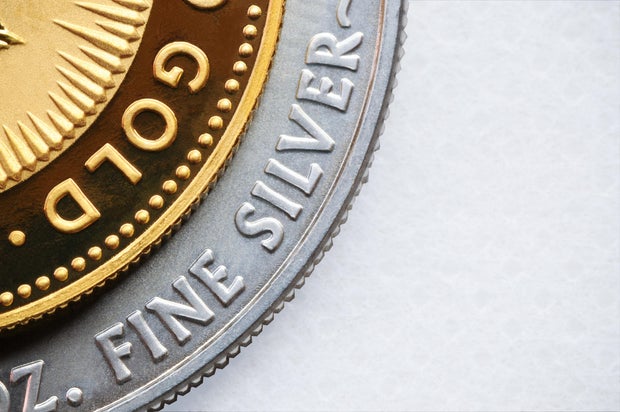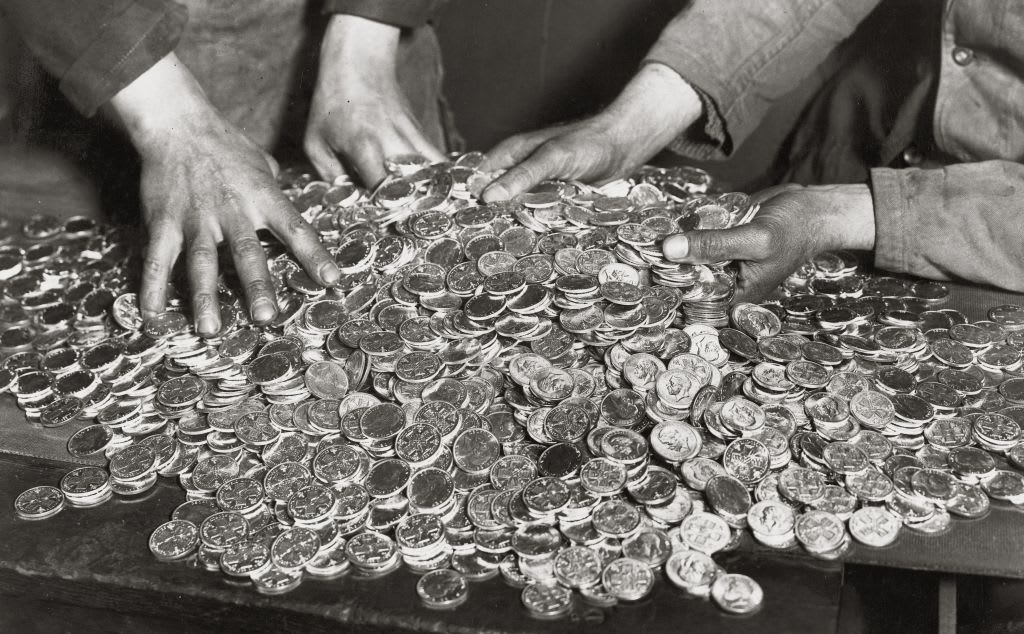Gold and silver prices: Everything to know now
When the economy feels tumultuous, many investors become more interested in putting money toward safe investment options that can help diversify their portfolios and maintain value over time.
Precious metals like gold and silver are popular options for adding some investment security — but they may have different uses within your portfolio. To get a better understanding of these assets, and see how they perform through different environments, it can help to look at the price value.
Below, we'll look at gold prices compared to silver prices and when you may choose to invest in one over the other.
Learn more about gold investing today with a free information kit.
Gold prices vs. silver prices
The value of gold overall is much higher than silver — gold is generally valued around $2,000 per ounce today while silver's price is around $24.
While you probably already knew that gold was more valuable than silver on a pure weight basis, it can be even more helpful to view how those prices move over time.
Let's look at the past year, as an example. Last May, gold prices were around $1,850. They reached a low of around $1,650 in November before starting a relatively steady increase to around $2,000 today. That's an overall growth of about 8% year-over-year.
Silver, on the other hand, can be much more volatile, and may also lack the same growth. Silver prices were around $22 last May. They dropped to lows of around $18 in both July and September and cycled between $18 and $22 through the end of the year. After another increase to $24 in January and a drop to $20 in March, silver prices today are again about $24. On the whole, that's a 9% year-over-year increase — but with a lot of big moves in between.
Taking a wider lens of 10-year price data, gold may also prove more valuable in the long run. Comparing spot prices of each precious metal, gold's price has grown by about 48% ($1,350 to $2,000) over the past 10 years while silver has shown around a 12% increase ($21 to $23.50) in the same time.
So, while both silver and gold may show growth over time, gold may be a more relatively steady option. But just like any asset, your specific investment time period and goals can have a big impact on your outcome.
Learn more about how gold may fit your long-term investment strategy with a free investment guide today.
How prices can help you decide between gold and silver
Depending on your goals and investment plan, there may be times when gold makes a better choice for you than silver, or vice versa.
Gold is a popular investment option as an inflation hedge and diversifier against volatile markets and for good reason. Not only does gold's price appear to move more consistently over time, but it can also be consistent through certain market conditions. Gold tends to go up when inflation pushes the value of the dollar down and it moves independently of traditional stock and bond markets. So gold can help you maintain value, if not also make some gains, during periods of downturn elsewhere.
If you're looking for a way to stay afloat today, amid still-high prices and a looming recession, gold may be a good safe haven to consider.
A big draw for investing in silver, on the other hand, comes down to its low price point, relative to gold. It can make a good option for investors who want to benefit from precious metals as a hedge against traditional markets but may have less money to invest upfront. Counter to long-term investment strategies, silver's big short-term price swings may also hold appeal for traders willing to exchange higher risk for the potential reward.
The bottom line
If you're looking to diversify your portfolio against long-term volatility, adding some gold or silver could help.
Holding multiple asset classes can keep you protected against volatility in specific markets, so you can weather a downturn while also benefiting from growth over time. Just remember, neither gold nor silver offers the same long-term growth opportunities as other assets, like stocks and bonds — which is why experts typically recommend limiting your investment to around 5% or 10% of your overall portfolio.
You can learn more about diversifying with a gold investment today by requesting a free investors kit.






